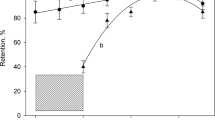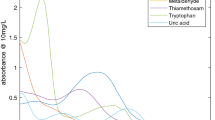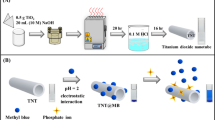Abstract
A COMMERCIALLY available spectroscope, the Duo-Spectranal model 80 (Fisher Scientific Co.), has been recommended for the rapid detection of more than sixty elements. This inexpensive instrument1 uses the combustion of hydrogen as an excitation source. The hydrogen is produced together with oxygen by electrolysis of an aqueous acid solution of the cations. Because the electrodes are connected to an a.c. power source, each is alternately a cathode and an anode. The hydrogen formed with the oxygen in the vicinity of the shorter electrode explodes in each current cycle.
This is a preview of subscription content, access via your institution
Access options
Subscribe to this journal
Receive 51 print issues and online access
$199.00 per year
only $3.90 per issue
Buy this article
- Purchase on Springer Link
- Instant access to full article PDF
Prices may be subject to local taxes which are calculated during checkout
Similar content being viewed by others
References
U.S. patents 3,024,693 and 3,045,533 issued to Dr. Duane D. Harmon and assigned to Fisher Scientific Co.
Author information
Authors and Affiliations
Rights and permissions
About this article
Cite this article
SEYMOUR, R., TSANG, HS. Simple Spectroscopic Method for Detection of Cations. Nature 212, 71–72 (1966). https://doi.org/10.1038/212071b0
Issue Date:
DOI: https://doi.org/10.1038/212071b0
Comments
By submitting a comment you agree to abide by our Terms and Community Guidelines. If you find something abusive or that does not comply with our terms or guidelines please flag it as inappropriate.



